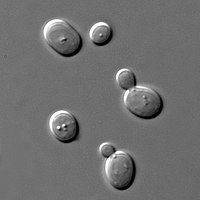
Mineral Elements and their Relation to Anthocyanin Content in Pigmented Rice Plants using Definitive Screening Design and Self Organising Map.
Sign Up to like & getrecommendations! Published in 2023 at "Journal of the science of food and agriculture"
DOI: 10.1002/jsfa.12534
Abstract: BACKGROUND Mineral elements are nutrients required by an organism to perform functions necessary for survival. Stress induced metabolism following nutritional stress have been reported to increase levels of anthocyanin. However, the role of mineral elements… read more here.
Keywords: mineral elements; anthocyanin; anthocyanin content; rice plants ... See more keywords

Geographical variations in arsenic contents in rice plants from Latin America and the Iberian Peninsula in relation to soil conditions
Sign Up to like & getrecommendations! Published in 2020 at "Environmental Geochemistry and Health"
DOI: 10.1007/s10653-020-00581-8
Abstract: Arsenic is a ubiquitous, toxic element that is efficiently accumulated by rice plants. This study assessed the spatial variability in the total As (tAs) contents and organic and inorganic forms in different types of rice,… read more here.
Keywords: rice; geographical variations; latin america; iberian peninsula ... See more keywords

Functional interplay of genes in prioritizing the responses of rice plants to fungal infection and abiotic stress
Sign Up to like & getrecommendations! Published in 2018 at "Acta Physiologiae Plantarum"
DOI: 10.1007/s11738-018-2725-5
Abstract: Main conclusionBased on severity and life threatening status, rice plants prioritize their molecular response to abiotic stress and fungal infection through switching-on and -off the cross-talking genes.AbstractRice (Oryza sativa L.) is a crop which is… read more here.
Keywords: abiotic stress; stress; rice plants; fungal infection ... See more keywords

Arsenic Bio-volatilization by Engineered Yeast Promotes Rice Growth and Reduces Arsenic Accumulation in Grains
Sign Up to like & getrecommendations! Published in 2019 at "International Journal of Environmental Research"
DOI: 10.1007/s41742-019-00188-7
Abstract: Arsenic is listed as the most extensive environmental carcinogens. The present report demonstrated that yeast expressing WaarsM gene encoding arsenic methyltransferase from soil fungus Westerdykella aurantiaca removes arsenic from contaminated soil. We investigated the potential… read more here.
Keywords: rice plants; yeast; soil; growth ... See more keywords

Humic acid as a biotechnological alternative to increase N-NO3- or N-NH4+ uptake in rice plants
Sign Up to like & getrecommendations! Published in 2019 at "Biocatalysis and Agricultural Biotechnology"
DOI: 10.1016/j.bcab.2019.101226
Abstract: Abstract The aim of this work was to evaluate the vermicompost humic acid (HA) stimulatory effects on the N-uptake kinetics and the N metabolism of rice plants under high and low N-NO3- or N-NH4+ supply… read more here.
Keywords: rice plants; fresh weight; no3 nh4; humic acid ... See more keywords

The growth and uptake of Ga and In of rice (Oryza sative L.) seedlings as affected by Ga and In concentrations in hydroponic cultures.
Sign Up to like & getrecommendations! Published in 2017 at "Ecotoxicology and environmental safety"
DOI: 10.1016/j.ecoenv.2016.09.016
Abstract: Limited information is available on the effects of gallium (Ga) and indium (In) on the growth of paddy rice. The Ga and In are emerging contaminants and widely used in high-tech industries nowadays. Understanding the… read more here.
Keywords: rice; hydroponic cultures; rice seedlings; uptake rice ... See more keywords

Soil attribute regulates assimilation of roxarsone metabolites by rice (Oryza sativa L.).
Sign Up to like & getrecommendations! Published in 2019 at "Ecotoxicology and environmental safety"
DOI: 10.1016/j.ecoenv.2019.109660
Abstract: Roxarsone (ROX), an organoarsenic feed additive, and its metabolites, can be present in animal manure used to fertilize rice. Rice is prone to absorb arsenic, and is subject to straighthead disorder, which reduces rice yield… read more here.
Keywords: rice; rice plants; roxarsone; rox ... See more keywords

Influence of different arsenic species on uptake, speciation and efflux of arsenic in hydroponic rice plants.
Sign Up to like & getrecommendations! Published in 2019 at "Ecotoxicology and environmental safety"
DOI: 10.1016/j.ecoenv.2019.109791
Abstract: Uptake, translocation and speciation of As in rice plants have been investigated through hydroponic cultivations under stress from different As species. After germination, rice seedlings were treated with arsenite [As(III)], arsenate [As(V)], monomethylarsonic acid (MMA)… read more here.
Keywords: rice; rice roots; different arsenic; rice plants ... See more keywords

Selenium toxicity stress-induced phenotypical, biochemical and physiological responses in rice plants: Characterization of symptoms and plant metabolic adjustment.
Sign Up to like & getrecommendations! Published in 2020 at "Ecotoxicology and environmental safety"
DOI: 10.1016/j.ecoenv.2020.110916
Abstract: Selenium (Se) at low concentration is considered benefit element to plants. The range between optimal and toxic concentration of Se is narrow and varies among plant species. This study aimed to evaluate the phenotypic, physiological… read more here.
Keywords: stress; rice plants; rice; selenium toxicity ... See more keywords

Improved grain yield and lowered arsenic accumulation in rice plants by inoculation with arsenite-oxidizing Achromobacter xylosoxidans GD03.
Sign Up to like & getrecommendations! Published in 2020 at "Ecotoxicology and environmental safety"
DOI: 10.1016/j.ecoenv.2020.111229
Abstract: Arsenite is the predominant arsenic species in flooded paddy soil, and arsenite bioaccumulation in rice grains has been identified as a major problem in many Asian countries. Lowering arsenite level in rice plants and grain… read more here.
Keywords: arsenite oxidizing; paddy soil; xylosoxidans gd03; rice ... See more keywords

Rhizosphere bacterial community composition affects cadmium and arsenic accumulation in rice (Oryza sativa L.).
Sign Up to like & getrecommendations! Published in 2021 at "Ecotoxicology and environmental safety"
DOI: 10.1016/j.ecoenv.2021.112474
Abstract: Cadmium (Cd) and arsenic (As) contamination in paddy soils poses serious health risks to humans. The accumulation of Cd and As in rice (Oryza sativa L.) depends on their bioavailability, which is affected by soil… read more here.
Keywords: rice; rice plants; accumulation rice; composition ... See more keywords